If you live in the islands and your financial situation allows you the luxury of your own reverse osmosis water maker, then you can stop reading right now. If you are not familiar with public water in the islands then this will probably be a relevant topic when considering making your move to these lower latitudes.
The first few islands I lived on in the Bahamas, I was fortunate to have access to pure, desalinized water for drinking, bathing and laundry. I got spoiled. Whenever I went to Nassau I always felt like I could never get the soap completely rinsed out of my hair, the pressure was terrible and the water company always turned it off between 10pm-5am. We were always lugging around and refilling heavy 5 gallon jugs of store-bought water for drinking instead of pouring a nice cool drink from the tap. When I moved to Harbour Island and started going back to Nassau for visits, all of the sudden Nassau city water has become the nectar of the gods and showering in it has become a special treat. Harbour Island city water is that bad.
Nassau produces their own city water with a large reverse osmosis (RO) plant that desalinizes salt water. It’s not quite drinkable out of the tap, so there are private water companies go the extra steps and run the water through UV filters and purifiers and then sell it to the general public as drinking water. Some people put their own filtration systems in their homes, but it’s a pretty hefty upfront investment compared to buying 5 gallon jugs.
Unlike Nassau’s system, Harbour Island pumps water out of the ground, which due to its small land mass and the porous limestone composition, seawater is easily allowed to infiltrate. Seawater has a salinity level of about 35,000 ppm. Tap water in the United States typically has a salinity level of less than 100 ppm. Harbour Island city water was tested at 25,000 ppm. It’s not far from straight salt-water coming out of the tap. There is no filtration system that will take this high of salinity level and make it drinkable, so many homeowners that can afford it choose to install their own RO desalinization systems.
 |
| An ever-changing buffet of hair conditioners |
It’s been a challenge using “salt water” as our only option for water usage, and it really makes you appreciate having good tap water. In Harbour Island, the salt rusts the underground pipes and occasionally the water comes out of the faucet orange. After doing laundry here for over a year, my whites will never be white again. This also speaks for my fried hair and rusty silverware.
I have fine and relatively thin hair. I have never used conditioner much and have actually struggled with my hair being so silky that it would have trouble staying in a ponytail. When I would swim in the saltwater as a child, I loved the way the salt would make my hair feel thick and full. Now I actually keep a 1 gallon jug of fresh water in the shower and rinse my hair and face after I shower with the city water. I try to limit my hair washings which gives me a bad hair day nearly every other day. These days I’m usually sporting a greasy scalp with scraggly ends that I do my best to hide in a bun or under a headband. When I go to the states I am constantly keeping my eye out for new moisturizing hair products and leave-in conditioners that won’t weigh my hair down.
 |
| The battle to keep the whites white |
At one place we rented, we had to carry the heavy 5 gallon jugs of store-bought water up three flights of stairs and then pour it into a dispenser that we kept in the fridge, carefully trying not to slop water all over ourselves and the floor while doing so. At our new place the refrigerator is set up to dispense water and ice, so all we had to do was buy a pump system that plugs right into the 5 gallon jug so we have fresh cool water and it produces more ice than we know what to do with. A bonus, for sure. But sometimes I really do miss the days of just turning on the tap and filling my glass.
The other downside is the irregularity of service. Oftentimes the water will just go out with no apparent explanation. At least in Nassau we were trained that the water went out overnight, but on Harbour Island you might be in the middle of doing laundry or giving the dog a bath and it fades to a trickle and then stops, sometimes for the remainder of the day. I’ve been known to bathe with 5 gallon jugs of water on more than one occasion.
The other side of the spectrum is that 50+ years ago, the only water anyone used in the islands was from rainwater collection. At some point, someone convinced locals that rainwater was bad. I am completely and utterly baffled by this mentality. I know that in the United States if you are in a certain geographical radius of a farm that ever used DDT, then rainwater collection is a bad idea because of the potential for chemicals. In the islands with a lack of farming with pesticides and chemicals, that’s not something we have to worry about. The majority of the rainwater evaporation comes off the sea.
Our half-built house in Nassau is equipped with a 20,000 gallon rainwater collecting cistern. People thought Mark was crazy when he designed it. But with constant water outages and the lack of quality, these days it doesn’t seem so crazy after all. And there are some really great home filtration systems on the market that will easily convert rainwater into drinking water. Installing a cistern is certainly an added cost when building and even more difficult to install on a small lot with an existing house on it. But many older homes, especially on Harbour Island, already have a cistern in place that people divert city water into for reserves. It seems pretty silly to me why anyone wouldn’t utilize their gutters and take advantage of the heavy rainfall that we see on this island. It’s free and once you’ve experienced showering in rainwater you’ll never want to go back to using regular old tap water.

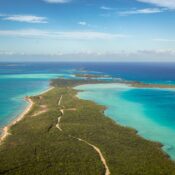
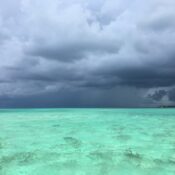
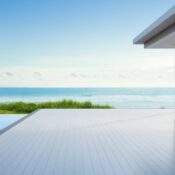
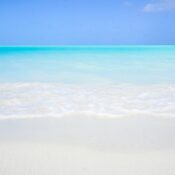
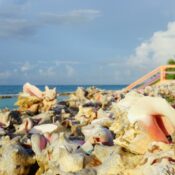
0 Comments